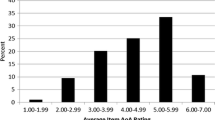Abstract
Several 6F5(1) evaluations are given which generalize Andrews' 5F4(1) evaluations. All such evaluations are shown to be equivalent to transformations for a 4F3(z). The methodology allows for higher evaluations, for example an 8F7(1) is given which specializes to over one hundred 5F4(1) results, including all of Andrews'.
Similar content being viewed by others
References
G.E. Andrews, “Pfaff's method (I): The Mills-Robbins-Rumsey determinant,” to appear in, Discrete Math.
G.E. Andrews, “Pfaff's method (III): Comparison with the WZ method,” Elec. J. Comb. 3 (1996), 517–534.
G. Andrews and D. Stanton, “Determinants in plane partition enumeration,” to appear in, Eur. J. Comb.
S. Ekhad and D. Zeilberger, “Curing the Andrews syndrome,” to appear in, J. Difference Eq. and Applications.
G. Gasper and M. Rahman, Basic Hypergeometric Series, Cambridge University Press, 1990.
M. Petkovsek and H. Wilf, “A high-tech proof of the Mills-Robbins-Rumsey determinant formula,” Elec. J. Comb. 3 (1996), 499–502.
Author information
Authors and Affiliations
Rights and permissions
About this article
Cite this article
Stanton, D. A Hypergeometric Hierarchy for the Andrews Evaluations. The Ramanujan Journal 2, 499–509 (1998). https://doi.org/10.1023/A:1009784911098
Issue Date:
DOI: https://doi.org/10.1023/A:1009784911098




